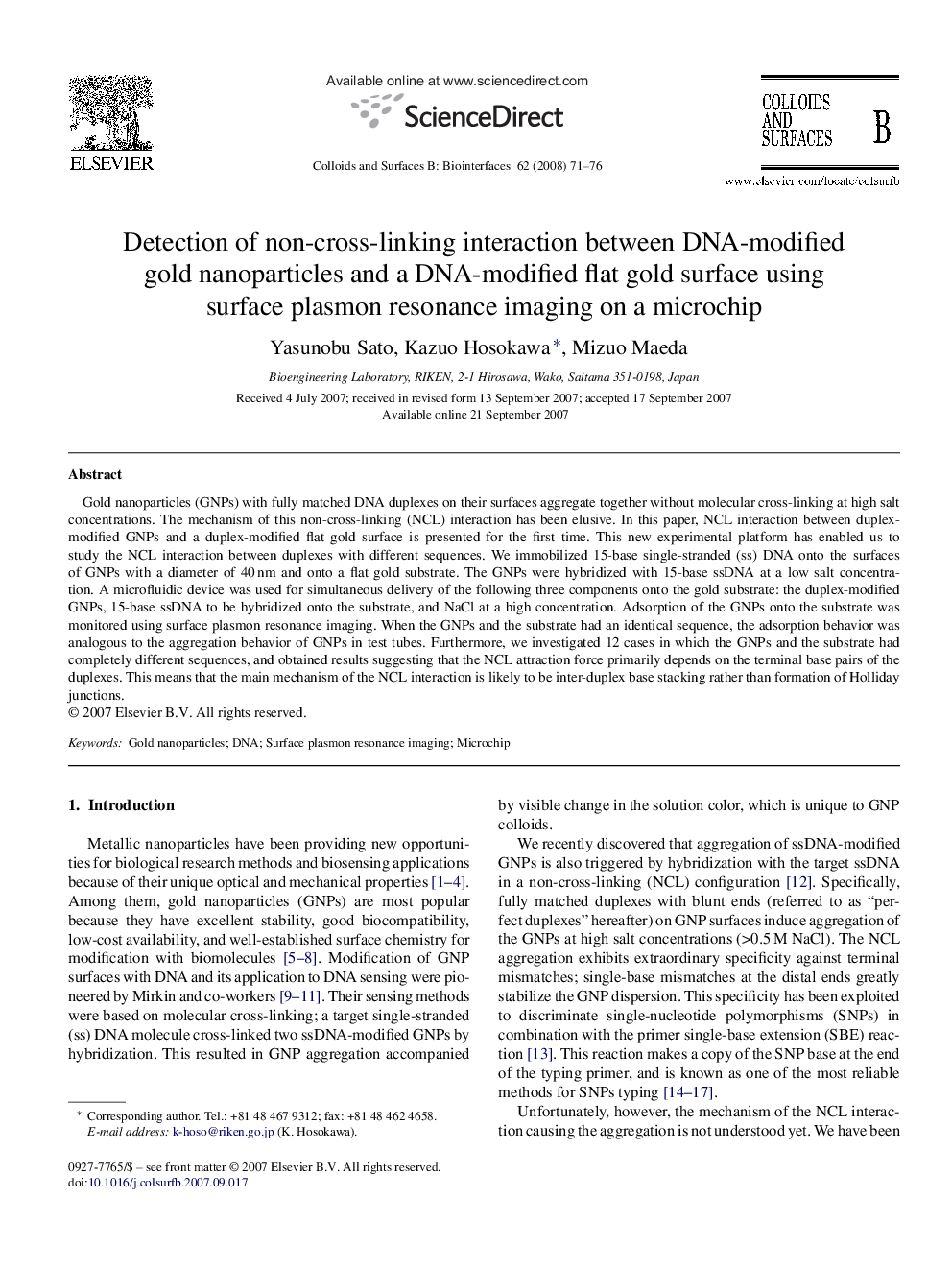| Article ID | Journal | Published Year | Pages | File Type |
|---|---|---|---|---|
| 602485 | Colloids and Surfaces B: Biointerfaces | 2008 | 6 Pages |
Gold nanoparticles (GNPs) with fully matched DNA duplexes on their surfaces aggregate together without molecular cross-linking at high salt concentrations. The mechanism of this non-cross-linking (NCL) interaction has been elusive. In this paper, NCL interaction between duplex-modified GNPs and a duplex-modified flat gold surface is presented for the first time. This new experimental platform has enabled us to study the NCL interaction between duplexes with different sequences. We immobilized 15-base single-stranded (ss) DNA onto the surfaces of GNPs with a diameter of 40 nm and onto a flat gold substrate. The GNPs were hybridized with 15-base ssDNA at a low salt concentration. A microfluidic device was used for simultaneous delivery of the following three components onto the gold substrate: the duplex-modified GNPs, 15-base ssDNA to be hybridized onto the substrate, and NaCl at a high concentration. Adsorption of the GNPs onto the substrate was monitored using surface plasmon resonance imaging. When the GNPs and the substrate had an identical sequence, the adsorption behavior was analogous to the aggregation behavior of GNPs in test tubes. Furthermore, we investigated 12 cases in which the GNPs and the substrate had completely different sequences, and obtained results suggesting that the NCL attraction force primarily depends on the terminal base pairs of the duplexes. This means that the main mechanism of the NCL interaction is likely to be inter-duplex base stacking rather than formation of Holliday junctions.
